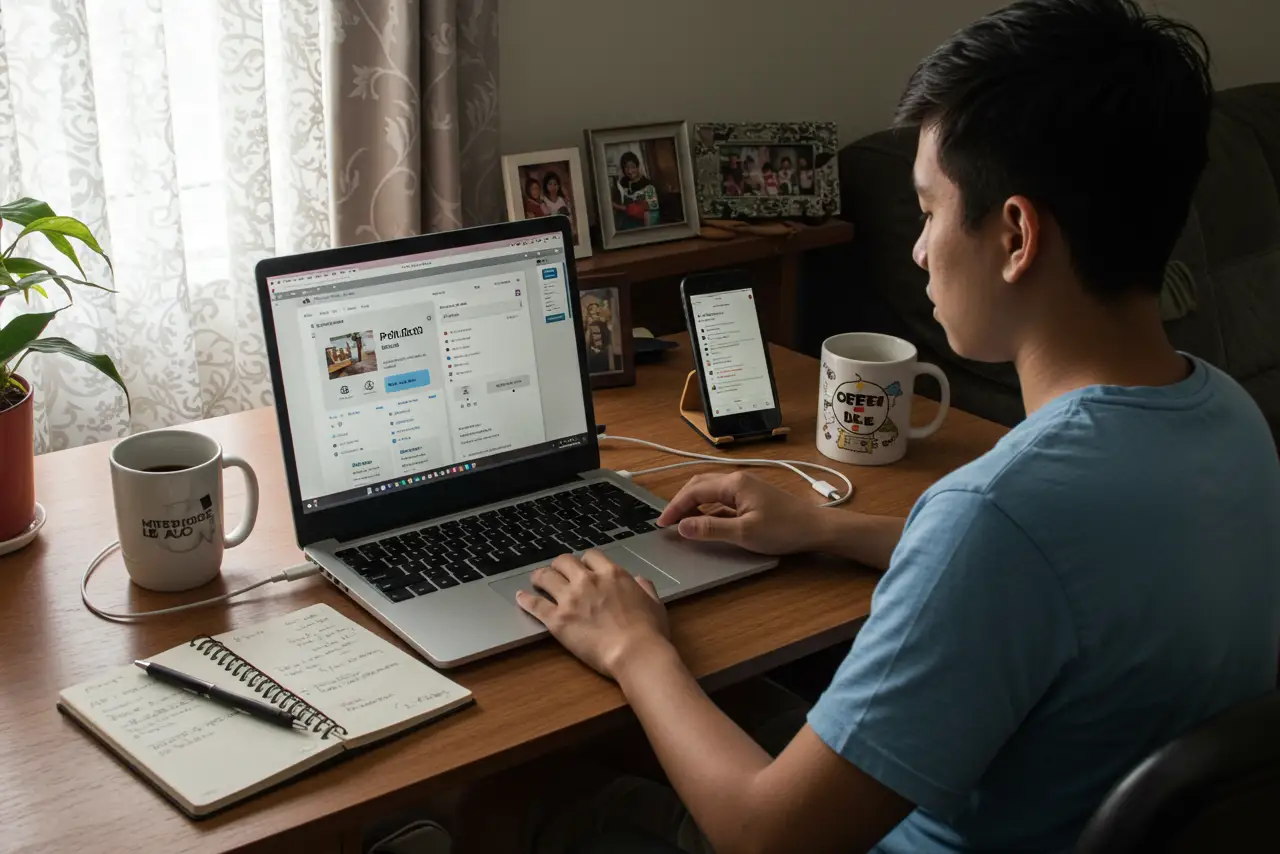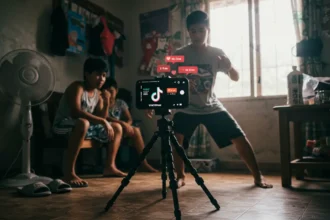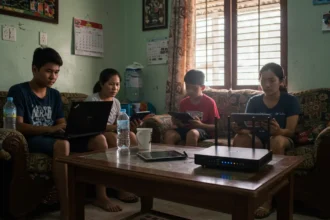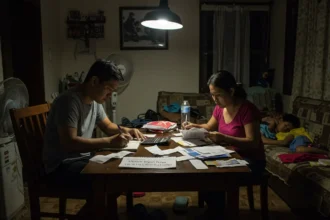If you’ve ever dreamed of sharing your ideas online and earning from it, now is the best time to start a blog Philippines. Blogging in 2025 is still a legit way to build influence, grow an audience, and make real money from home.
With minimal startup cost, flexible hours, and plenty of monetization options, blogging gives Pinoys a chance to turn passion into profit. Whether you’re into food, travel, finance, or tech, there’s always room for authentic Filipino voices online.
| Step | What You Do | Why It Matters |
|---|---|---|
| 1. Choose Your Niche | Pick a focused topic you love | Keeps your blog clear and consistent |
| 2. Set Up Your Blog | Domain, hosting, theme | Makes your blog professional & ready |
| 3. Create Content | Write useful posts | Attracts readers and builds trust |
| 4. Promote | Social media, SEO, collaborations | Grows your audience |
| 5. Monetize | Ads, affiliates, sponsored posts | Turns traffic into income |
| 6. Engage & Grow | Reply to readers, build email list | Creates loyal followers |

🎯 Step 1 – Choose Your Niche
Every successful blog starts with one crucial decision: your niche. This is your blog’s identity, the “kwento” that ties all your posts together, and the reason readers will keep coming back. Without a clear niche, your blog can feel scattered — like a sari-sari store that sells a little of everything but doesn’t have suki who come back for something specific.
When you start a blog Philippines, your niche should sit at the sweet spot of three things:
-
Your Passion – Something you enjoy talking about even when you’re tired.
-
Your Knowledge – Skills, experiences, or even hobbies you can share.
-
Market Demand – A topic people are already searching for, asking about in FB groups, or watching on TikTok.
Here are a few niches that thrive for Pinoy bloggers:
-
Food & Recipes – Not just restaurant reviews, but tipid recipes, ulam pang-barkada, or even carinderia business insights.
-
Personal Finance & Ipon Hacks – Filipinos love practical saving tips (like the 52-week challenge), plus side hustle ideas that actually work.
-
Travel & Tourism – Budget itineraries for Bohol, Siargao, or even barangay-level food crawls. Pinoys want “diskarte” tips for affordable adventures.
-
Parenting & Family Life – From managing household expenses to teaching kids values in a digital world, parenting content always connects.
-
Tech & Apps – Unboxing budget smartphones, Pinoy-friendly app tutorials, and even reviews of affordable laptops or gadgets.
💡 Tip for Beginners: Don’t try to cover everything. A blog that focuses on “Budget Travel for Families” or “Affordable Tech for Pinoys” will grow faster than a general blog. Narrowing down lets you attract a loyal community and rank higher on Google for specific searches.
And remember — your niche doesn’t have to be forever. Many bloggers refine their focus as they grow. The important thing is to start with a direction, then listen to your readers and evolve along the way.
🛠️ Step 2 – Set Up Your Blog
Once you’ve chosen your niche, it’s time to build your online home — your blog. Think of it like putting up your own tindahan: you need a location (domain), a space to keep your goods (hosting), and a nice layout (design). The good news? Setting up a blog in the Philippines today is cheaper and easier than ever.
Platform: Where to Blog
You have two main options:
-
Free Platforms (WordPress.com, Blogger, Medium): Great for testing the waters, but limited in customization and harder to monetize.
-
Self-Hosted WordPress (WordPress.org): The gold standard for serious bloggers. It gives you full control, lets you install plugins for SEO, and makes your site look professional.
👉 Recommendation: If you’re serious about making money, go with WordPress.org. It’s like owning your bahay-lote instead of renting an apartment — more effort upfront, but you truly own it.
Domain Name: Your Blog’s Identity
A domain is your address online (example: myfoodblogph.com). Choose something short, catchy, and easy to spell. For Pinoy blogs, a mix of English and Tagalog often works (e.g., TipidTravelPH.com, IponTipsPH.com).
-
Cost: Usually ₱500–₱1,000/year.
-
Pro Tip: Avoid using dates (like “2025”) in your domain so it stays evergreen.
Web Hosting: Where Your Blog Lives
Hosting is like paying rent for your blog’s space on the internet. Some affordable and Pinoy-friendly hosting services include:
-
Hostinger – Very affordable starter plans.
-
Bluehost – Popular for beginners worldwide.
-
SiteGround – Reliable with strong support.
Expect to pay around ₱2,500–₱4,000/year for hosting. That’s less than ₱12/day — mas mura pa sa isang Starbucks coffee!
Design: Make It Simple & Mobile-Friendly
Most readers today use smartphones, so pick a clean, mobile-responsive theme. Don’t stress too much about design at the start — your content is what really matters. Many free themes already look professional.
| Item | Estimated Cost | Notes |
|---|---|---|
| Domain Name (.com) | ₱500–₱1,000/year | Short & catchy is best |
| Web Hosting | ₱2,500–₱4,000/year | Affordable shared hosting for beginners |
| WordPress Theme | Free–₱2,000 | Free themes work fine to start |
| Optional Tools | ₱500–₱1,500/month | Email marketing, premium plugins |
💡 Pinoy Tip: Don’t over-decorate your blog with too many colors or widgets. Treat it like a sari-sari store signboard: keep it neat, clear, and welcoming.
By the end of this step, you’ll have a working blog online, ready to showcase your first posts.

✍️ Step 3 – Create High-Quality Content
Now that your blog is live, it’s time to fill it with content — the lifeblood of your online presence. Remember, people don’t visit your site just to admire the design; they come for the value you give. To start a blog Philippines and actually earn, you need posts that are helpful, entertaining, and easy to read.
What to Write First
Begin with “foundation posts” — evergreen articles that introduce your niche and set the tone for your blog. Examples:
-
A food blog could start with “10 Affordable Ulam Ideas Under ₱100”.
-
A travel blog might post “Ultimate Guide to Budget Travel in Cebu”.
-
A finance blog could feature “Pinoy Ipon Hacks: How to Save ₱50 a Day”.
Also, include a short About Me page to connect with readers. People love knowing the face and story behind a blog — it makes your site more relatable.
Writing Style That Works
Write as if you’re talking to a friend. Keep sentences short, use Taglish if it fits your audience, and always aim to answer your reader’s questions. Add humor or personal anecdotes when possible — it makes your posts uniquely yours.
Be Consistent
One common mistake of new bloggers is writing one post and then disappearing for months. Consistency builds trust. Aim for at least 1 post per week when starting out. Think of it like planting seeds — the more you plant, the bigger your garden of content will grow.
Build Trust With Honesty
If you’re reviewing a product, be upfront about both pros and cons. Readers can smell hype a mile away, and credibility is everything. Honest content keeps people coming back, and in affiliate blogging, trust equals income.
| Content Type | Example | Why It Works |
|---|---|---|
| Reviews | “Best Budget Smartphones PH 2025” | Helps readers decide before buying |
| Lists | “Top 10 Tipid Travel Hacks” | Easy to read & share |
| Tutorials | “How to Cook Adobo sa Gata” | Evergreen and helpful |
| Personal Stories | “How I Saved ₱50k in 6 Months” | Builds connection with readers |
💡 Pro Tip: Use simple formatting tricks to make posts readable — break long paragraphs, add bullet points, and use headings (H2/H3) so readers can scan quickly.
By the end of this step, you’ll have content that not only attracts visitors but also positions you as a trustworthy Pinoy voice in your niche.
📢 Step 4 – Promote Your Blog
You’ve built your blog and published a few posts — now what? The next step is to get people to actually read it. Promotion is where many beginners struggle, but it’s also where your blog can really take off. The key is to be strategic: promote where your readers already hang out.
Leverage Social Media
Filipinos are among the heaviest social media users in the world. Use that to your advantage:
-
Facebook: Create a page for your blog and share posts in relevant FB groups (travel groups, foodies, mom communities). Just avoid spamming — add value to the conversation.
-
TikTok: Short, engaging clips can drive traffic to your site. For example, if you’re a food blogger, post quick cooking hacks and link to your full recipe.
-
Instagram: Perfect for lifestyle, food, and travel blogs. A good photo with a story-style caption can draw followers who’ll check out your blog.
Basic SEO (Search Engine Optimization)
If you want Google traffic, learn the basics of SEO. It’s not as scary as it sounds. Start with:
-
Using keywords naturally in your titles and posts (e.g., “Best Budget Smartphones PH 2025”).
-
Writing meta descriptions that make people want to click.
-
Linking between your own posts to keep readers exploring your site.
Think of SEO as planting seeds on Google — it may take time, but eventually, readers will find you without ads.
Collaborate With Other Pinoy Bloggers
Networking works online, too. Guest post on each other’s blogs, mention one another in articles, or cross-promote on social media. The Pinoy blogging community is small but very supportive.
Paid Promotion (Optional)
Once you’re making a little income, you can reinvest by boosting posts on Facebook or running cheap Google Ads. Even ₱100–₱200 can get you started testing if ads bring in readers or subscribers.
💡 Tip: Don’t just chase traffic for the sake of numbers. Focus on bringing in the right audience — people who care about your niche and will come back for more.
By mastering promotion, you’ll turn your blog from a hidden passion project into a platform people actually visit and share.

💰 Step 5 – Monetize Your Blog
Here’s the exciting part — turning your blog into an online income Philippines stream. Once you’ve built up some content and traffic, you can start making money from different sources. Think of your blog as a digital sari-sari store: the more products you can offer, the more ways you can earn.
1. Advertising
-
Google AdSense is the most common starting point. Once your blog has steady traffic, you can apply and earn every time visitors see or click ads on your site.
-
Other ad networks (like Ezoic or Mediavine) pay more but usually require higher traffic.
💡 Tip: Ads work best when you already have at least 5,000–10,000 visits per month.
2. Affiliate Marketing
Promote products through special affiliate links and earn a commission when readers buy. Perfect for niches like tech, beauty, food, or parenting.
-
Examples: Shopee Affiliate Program, Lazada Affiliate, Involve Asia, or even Amazon.
-
A Pinoy food blogger, for example, could write “10 Best Budget Rice Cookers” and earn whenever readers buy via affiliate links.
3. Sponsored Posts & Brand Partnerships
When your blog grows, companies may pay you to feature their products or write reviews. Rates vary depending on your niche and traffic. Always disclose sponsored content for transparency — it builds trust with readers.
4. Sell Your Own Products or Services
Many successful Filipino bloggers diversify by creating:
-
E-books or Guides (e.g., “Pinoy Ipon Tips 101”).
-
Courses or Coaching (teach what you know, like photography, blogging, or budgeting).
-
Merchandise (custom mugs, T-shirts, or digital downloads).
5. Freelance Opportunities
Blogging can also be your portfolio. Many Pinoys land freelance writing, social media, or marketing gigs because clients see their blog as proof of skill.
| Method | Example | Income Potential |
|---|---|---|
| Ads | Google AdSense | Small at first, scales with traffic |
| Affiliate Marketing | Shopee, Lazada, Amazon links | High if niche has strong buyers |
| Sponsored Posts | Brand collaborations | Depends on niche & audience size |
| Own Products | E-books, coaching, merch | Unlimited, full control |
💡 Tip: Don’t try all monetization methods at once. Start with one (like AdSense or affiliate marketing) and expand as your traffic grows.
By monetizing smartly, your blog can go from a passion project to a true side hustle — or even your main source of income.
🌱 Step 6 – Engage & Grow
Starting your blog is just the beginning. The real secret to success is building a community around your content. Readers who feel connected will keep coming back, share your posts, and even support you financially down the line.
Interact With Your Readers
-
Reply to comments on your blog and social media. A simple “thank you” or a follow-up tip shows you value their time.
-
Ask questions at the end of posts (e.g., “What’s your favorite budget ulam?”). Engagement keeps readers involved.
Build an Email List
Don’t rely only on social media (algorithms change!). Collect emails through free tools like Mailchimp or MailerLite. Offer a small freebie, like a downloadable “Ipon Tracker” or “Budget Travel Checklist,” to encourage sign-ups. With email, you can directly send new posts, affiliate offers, or updates to your suki readers.
Collaborate With Other Bloggers
Networking is powerful. Guest post on each other’s blogs, swap mentions, or co-create content. Many Filipino bloggers grow faster by supporting one another than by competing.
Be Consistent With Posting
Success doesn’t come overnight. Readers and Google both reward consistency. Even one post per week builds momentum — that’s 52 posts in a year!
Track Your Progress
Use free tools like Google Analytics to see which posts get the most traffic. Focus on writing more of what works and improving posts that underperform.
💡 Pinoy Insight: Treat your blog like a small garden. With regular care (posting, engaging, promoting), it grows. Ignore it for months, and weeds (stagnation) take over. The bloggers who win are the ones who stay consistent.
By engaging your readers and steadily growing your blog, you transform it from a personal outlet into a thriving community — and eventually, a serious online income source.
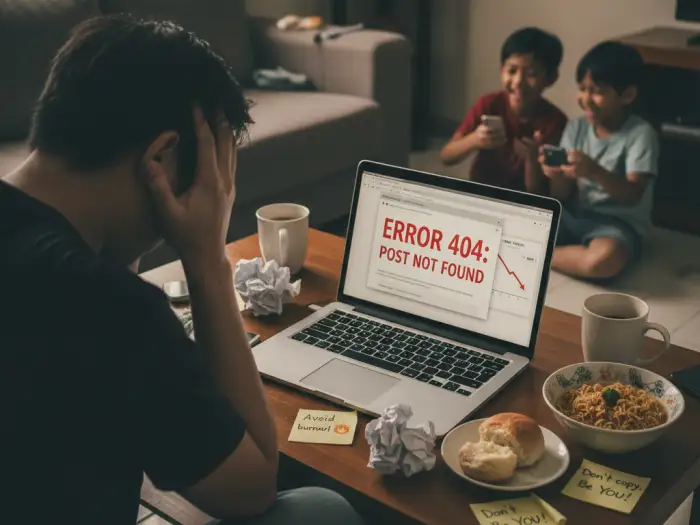
⚠️ Common Pitfalls to Avoid
Blogging looks fun and easy from the outside, but many Pinoys give up too soon because they fall into these traps. Here’s what you need to watch out for:
1. Expecting Quick Results
Some think starting a blog means instant income. The reality? It can take 6–12 months of consistent posting before you see steady traffic or earnings. Blogging is a marathon, not a sprint.
2. Choosing Too Broad a Niche
If your blog covers everything under the sun (travel, tech, food, beauty, finance), it confuses both readers and Google. Start with a focused niche first (like “budget travel PH” or “Pinoy parenting hacks”) and expand later.
3. Spamming Links
Avoid dropping your blog link everywhere without context, especially in Facebook groups. It comes across as spammy and can even get you banned. Instead, add value to conversations, then share your blog naturally.
4. Neglecting Consistency
Publishing once, then disappearing for months, kills momentum. Readers forget you, and Google stops ranking your site higher. Stick to a schedule — even once a week is better than bursts of random posting.
5. Ignoring SEO Basics
Without optimizing your blog posts, you miss out on free Google traffic. Learn simple things like adding keywords in your titles, using alt text for images, and linking your articles together. Small tweaks make a big difference.
6. Forgetting Legal & Tax Obligations
Yes, blogging can be a real business. Once you start earning regularly, register as self-employed and declare income properly. This keeps you legit, avoids penalties, and opens opportunities (like brand partnerships that require receipts).
💡 Tip: Remember, mistakes are part of the journey. The key is to learn from them quickly and keep moving forward.
❓ FAQs About Starting a Blog in the Philippines
1. Do I need a lot of money to start a blog?
Not at all. You can get started with just a domain (₱500–₱1,000/year) and affordable hosting (₱2,500–₱4,000/year). That’s cheaper than one milk tea a week!
2. Can I start a blog for free?
Yes, platforms like Blogger or WordPress.com let you start free. But if you want to look professional and monetize, investing in your own domain and hosting is highly recommended.
3. How long until I make money from blogging?
It varies. Some see earnings in 6 months, while others take a year or more depending on niche, consistency, and promotion.
4. Do I have to be great at writing?
No. Blogging is more about sharing useful ideas in a relatable way. Write as if you’re talking to a friend — authenticity matters more than perfect grammar.
5. How often should I post?
Aim for at least once a week when starting. Consistency is key, and even short but valuable posts keep your audience engaged.
6. What’s the best niche for blogging in the Philippines?
Popular ones include food, travel, tech, finance, and parenting. The “best” niche is the one you’re passionate about and where there’s an audience.
7. Can I blog in Tagalog or Taglish?
Yes! Use the language your target readers prefer. For global reach, English works best, but for local readers, Tagalog or Taglish can make your blog feel more relatable.
8. How do bloggers in the Philippines earn money?
Mostly through Google AdSense, affiliate marketing (Shopee, Lazada, Involve Asia), and sponsored posts. Some also sell digital products or services.
9. Is blogging still worth it in 2025?
Absolutely. Blogging has evolved, but it’s still a solid way to build online income, especially if combined with social media and other digital strategies.
10. Do I need technical skills to start a blog?
Not really. Platforms like WordPress are beginner-friendly, and there are plenty of tutorials online. If you can use Facebook, you can learn to blog!

🚀 Turn Your Blogging Dreams Into Reality
Blogging isn’t just a hobby anymore — it’s a real opportunity for Filipinos to earn online, share their voice, and even build a personal brand. With low startup costs, flexible work-from-home setup, and multiple ways to monetize, there’s no better time to start a blog Philippines than now.
The key is simple: pick a niche you love, create valuable content, stay consistent, and keep learning. Success won’t come overnight, but every post you publish is a step closer to building an online income stream that can change your life.
So don’t wait any longer — launch your blog today and let your unique Pinoy story inspire, entertain, and help others while you earn. 🌟



